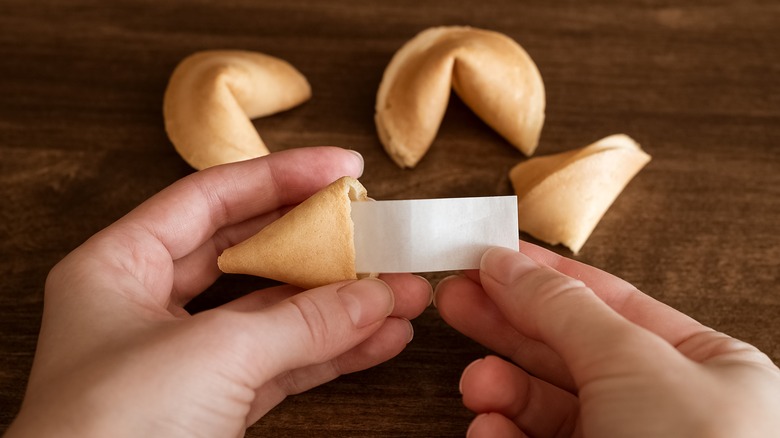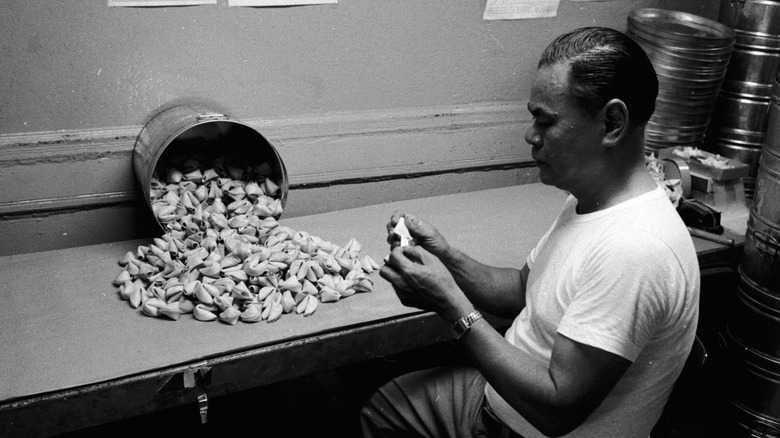We Finally Know How Fortune Cookies Get Their Messages Inside
Whether you're ordering takeout or sharing dishes around a lazy Susan, Chinese meals are often completed with a fortune cookie. Even if you're too full to eat the crunchy, delicately sweet cookie, you'll still crack it open to read the phrase printed on the ribbon of paper inside. If you've ever wondered how those strips get inside a fortune cookie's origami-like half-moon-half-butterfly shape, the answer has finally been revealed.
Originally made and formed by hand, fortune cookie dough is a simple mixture of eggs, sugar, flour, and water. The dough is a thin, crepe-like batter poured into circular cookie tins three inches in diameter before being baked. Like most cookies fresh out of the oven, hot fortune cookies are soft because their sugars remain liquid, only hardening as they cool. In this small window, cookie makers place the printed fortune paper in the center of the cookie before quickly folding the flexible, soft, hot cookie into its characteristic shape. As the folded cookies cool, the shape solidifies and effectively traps the paper until an eager customer is ready to crack it open and read their fortune.
Cookie makers initially used chopsticks to fold the dough, but as demand increased and industrial technology advanced, the entire process became mechanized. You can take tours of fortune cookie factories in San Francisco and Oakland for a mesmerizing look into how machines crank out thousands of cookies every hour, but most of the world's fortune cookies come from a single company in NYC.
The contested history of the fortune cookie
The origin of modern fortune cookies is hotly debated, ultimately culminating in the two purported founders battling it out in an American court. Fortune cookies are a staple at any U.S. Chinese food restaurant, but they were actually invented by the Japanese immigrant owner of San Francisco's Golden Gate Park Japanese Tea Garden, Makoto Hagiwara, in 1914. Hagiwara would serve fortune cookies with a cup of tea for customers.
While Hagiwara has been officially crowned inventor by San Francisco's Court of Historical Review, a Chinese immigrant named David Jung also claimed to have invented the fortune cookie at his Hong Kong Noodle Company kitchen in Los Angeles in 1918. Jung printed Bible quotes onto the slips of paper he stuffed into fortune cookies.
So, how did fortune cookies become associated more with Chinese American cuisine? The shift occurred during World War II. When Japan attacked Pearl Harbor, Americans retaliated with the mandatory banishment of Japanese immigrants and Japanese Americans to internment camps. While the Japanese tea house had been responsible for producing all fortune cookies since their invention, production was halted when its employees and confectioners were sent to internment camps. Consequently, Chinese entrepreneurs capitalized on the abrupt absence of Japanese competitors and cookies to co-opt the recipe, production, and sale.

